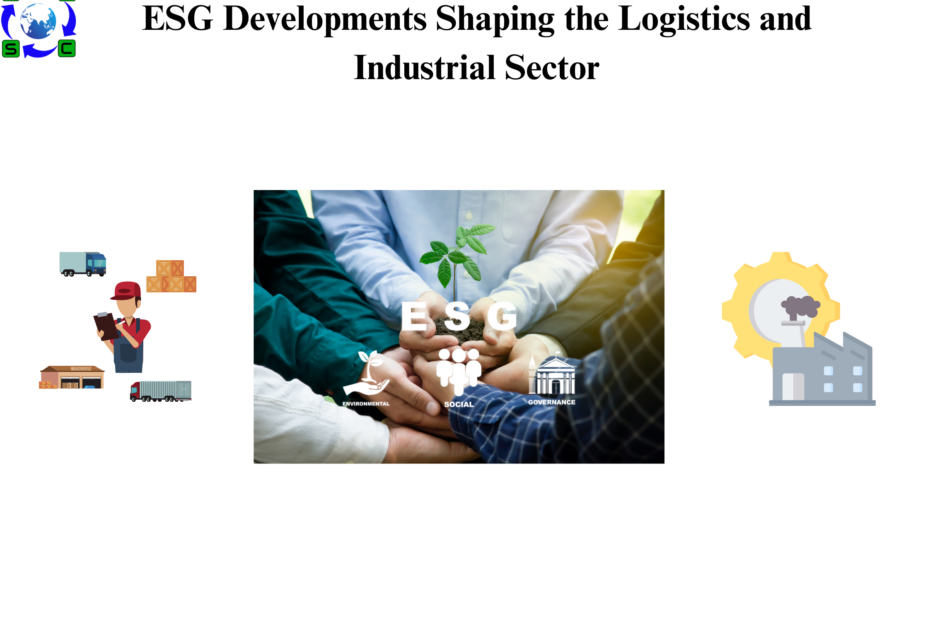 Trends in Environmental, Social, and Governance (ESG) are driving a major transition in the industrial and logistics market. The industry is changing significantly in a number of areas as companies, investors, and regulators place a greater emphasis on sustainability and moral behaviour:
Trends in Environmental, Social, and Governance (ESG) are driving a major transition in the industrial and logistics market. The industry is changing significantly in a number of areas as companies, investors, and regulators place a greater emphasis on sustainability and moral behaviour:
- Eco-Friendly Building and Design
- Green Buildings: Using sustainable materials and energy-efficient technology while building and renovating industrial buildings is becoming more and more important. LEED (Leadership in Energy and Environmental Design) certifications are becoming commonplace.
- Energy Efficiency: To lessen their carbon footprint, industrial warehouses and logistics centers are using renewable energy sources, such solar panels, as well as energy-efficient HVAC and lighting systems.
- Initiatives for a Circular Economy
- Waste Reduction: By cutting waste, reusing resources, and creating goods with end-of-life concerns in mind, businesses are putting the concepts of the circular economy into practice.
- Reverse logistics: To promote sustainable consumption habits, the logistics industry is adjusting to manage product returns, refurbishments, and recycling.
- Decarbonization of Logistics Networks
- Transportation that Is Carbon-Neutral: Investments in electric cars (EVs), hydrogen fuel cells, and alternative fuels for trucks and shipping boats are the results of the drive to reduce carbon emissions.
- Green supply chain management: To cut down on emissions and fuel use, businesses are streamlining logistical routes, cutting down on wasted mileage, and utilizing data analytics.
- Social Accountability and Workplace Conduct
- Worker Wellbeing: Businesses are concentrating on enhancing safe working practices, equitable pay, and working conditions in logistics and warehousing operations. This includes improved safety and health procedures as well as mental health assistance.
- Diversity and Inclusion: The industry is progressively adopting inclusive work cultures and diverse employment methods.
- Smart Logistics and Technological Integration
- Automation and IoT: By combining robotics, AI, and IoT devices, supply chain operations and warehouses are becoming more efficient, consuming less energy, and producing less waste.
- Blockchain Technology for Transparency: Stakeholders may trace items from point of origin to point of delivery and confirm sustainable practices by using blockchain technology to ensure transparency in supply chains.
- Reporting and Regulatory Compliance
- Corporate Sustainability Reporting Directive (CSRD) and Carbon Border Adjustment Mechanism (CBAM): These two rules require businesses to report on their environmental effect and comply with new carbon emission standards.
- ESG Reporting: More and more industrial and logistical businesses are being forced to submit comprehensive ESG reports, which promotes accountability and transparency.
- Consumer Insight into Sustainability
- Eco-Friendly Packaging: As a result of consumer demands for environmentally friendly packaging, businesses are being compelled to develop new materials and designs.
- Consumer openness: With sustainability becoming a major factor in consumer decision-making, there is an increasing demand for openness in the sourcing, production, and delivery of products.
In addition to influencing how the industrial and logistics sectors will develop in the future, these ESG trends are also pushing businesses to innovate and embrace more ethical and sustainable business practices. In a global market that is changing quickly, the sector’s resilience and long-term performance will depend on its capacity to adjust to these changes.








 Authorised IMDS & CDX Training & Consulting partner for
Authorised IMDS & CDX Training & Consulting partner for





